Introduction
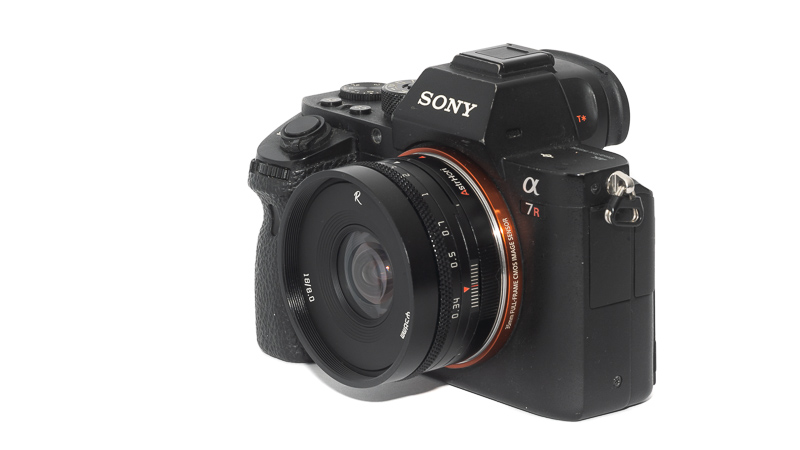
This AstrHori 18mm 8.0 Shift is already the third AstrHori lens I am reviewing here. Their lenses often feature a “little extra” over the competition to make them more interesting. In this case this isn’t just a compact 18mm lens, a ±6mm shift function has been added on top. Judging by the size of this lens, especially the diameter of the lens elements, I am wondering how useful that shift function will be though. But let’s have a look together in this review.
Sample Images
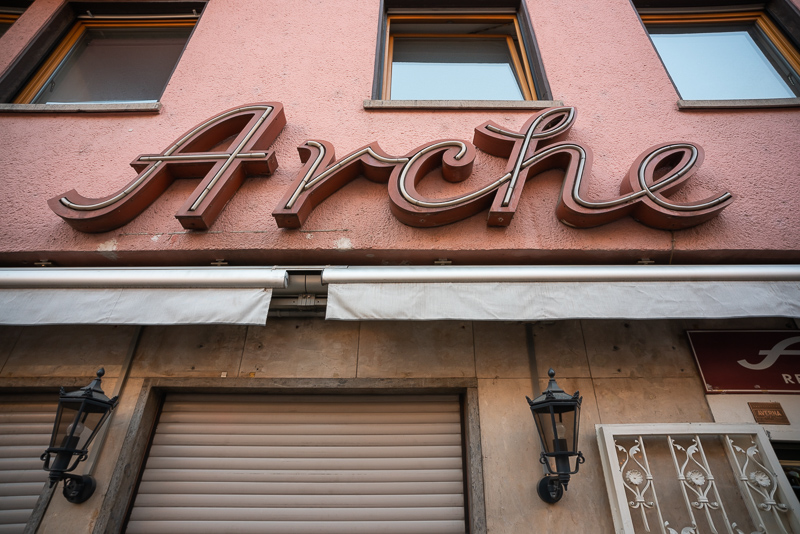
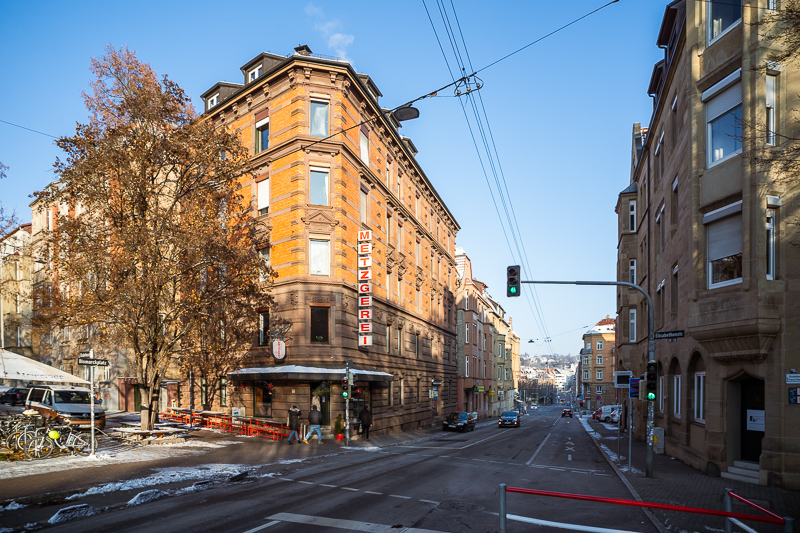
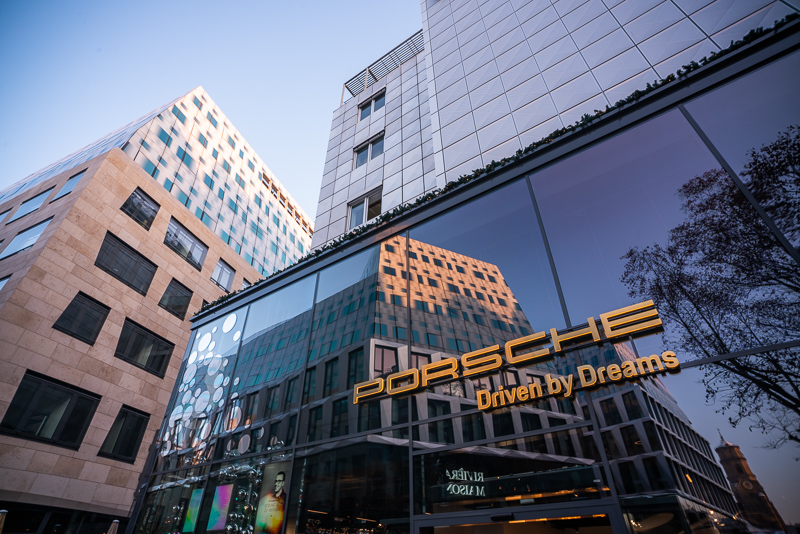

You can find most of the sample images in full resolution here.
Contents
Specifications
Some people speculated this is just a Funleader 18mm 8.0 with added shift mechanism, but that lens’ optical design is completely different and less complex. This AstrHori 18mm 8.0 Shift is available for several mounts (Sony E, Nikon Z, Canon RF and L), I am reviewing a Sony E-mount version here which has the following specifications:
- Diameter: 63 mm
- Field of view: 99.2° (diagonally, unshifted)
- Length: 33 mm
- Weight: 167g
- Filter Diameter: 58 mm
- Shift Range: ±6 mm
- Number of Aperture Blades: –
- Elements/Groups: 9/9
- Close Focusing Distance: 0.34 m
- Maximum Magnification: 1:14.4 (measured)
- Mount: Sony-E
buy from ebay.com | ebay.de | amazon.de (affiliate links) for $119
Disclosure
The 18mm 8.0 Shift was kindly provided free of charge by AstrHori for reviewing purpose for a duration of 4 weeks.
Handling / Build Quality
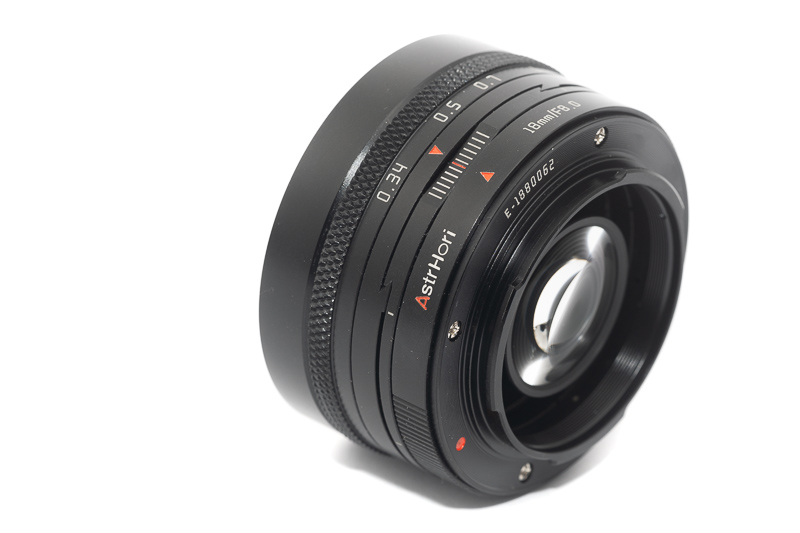
The build quality of this AstrHori 18mm 8.0 Shift reminds me a bit of some of the later 7Artisans lenses (those not made by DJ-Optical), as the markings on the lens barrel seem to be engraved and filled with paint and the writings on the retention ring seem to be only printed.
The narrow focus ring turns a little more than 90° from the minimum focus distance of 0.34 m to infinity and has a nice resistance.
As this is a fixed aperture lens there is no aperture ring to talk about.
Compared to most other shift lenses the mechanical construction is pretty basic though. While the lens can be rotated freely by 360° (with 45° click stops) and shifted by ±6 mm there are no locking knobs for either the rotation or the shift function.
The resistance for rotating the lens is a bit higher than that of the focus ring, but it still happened to me several times in the field that I rotated the lens instead of just the focus ring as I intended to.
The weight of the lens is low and this lens is new from factory and currently when shifted up it stays in place by itself, but I am not sure if this will still be the case after years of use. There is a click stop for the unshifted position though.
The lens also doesn’t feature any electronic contacts to communicate with the camera.
Vignetting
light falloff

Compared to the Funleader 18mm 8.0 the performance of this AstrHori lens is much better. On the Sony A7rII I measure 2.7 EV in the corners. This is unshifted, but what happens when we shift the lens?
As can be seen from these pictures shifting the lens easily leads to black corners. There is maybe 1 to 2 mm shift up without running into completely black corners, so the shift function is hardly useful on a fullframe camera. This is why in the following sections I will treat this as a normal non-shift lens.
color cast
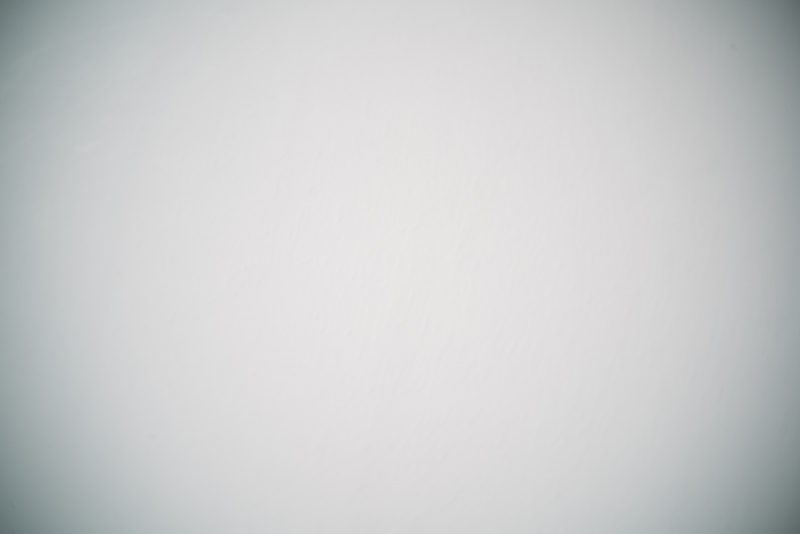
As we have often seen with compact ultra wide angle lenses there is a slight green color cast visible when using them on most of the Sony cameras like A7rII or A7III.
If you want to know how to fix this you can have a look at my article How to: Correcting Color Cast in Lightroom.
Sharpness
infinity (42mp Sony A7rII)
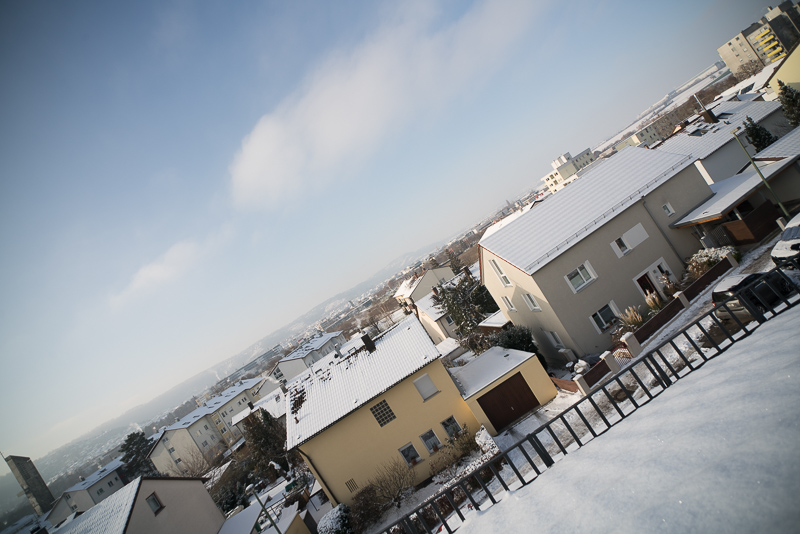
Some of you may remember my review of the AstrHori 12mm 2.8 fisheye. We saw that the lens performs noticeably better on cameras with a thinner filter stack and this is again the case here.
On a normal stock Sony camera the midframe doesn’t look great but the corners simply look bad. For a slow fixed aperture wide angle lens this performance would be unacceptable to me.
close 0.37 m (42mp Sony A7rII)
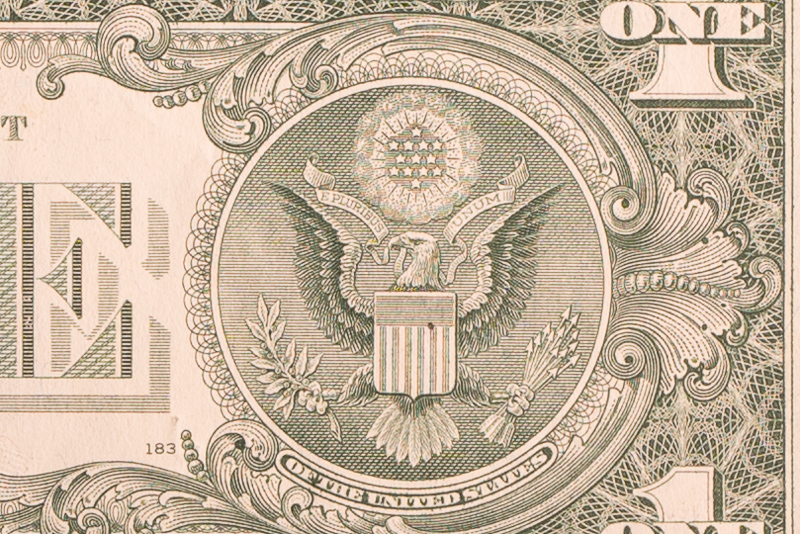
The minimum focus distance of 0.34 m is decent for an 18mm lens. The performance in the center is also very good here, but as is usually the case with ultra wide angle lenses without floating elements the corner performance is nothing to write home about.
Flare resistance
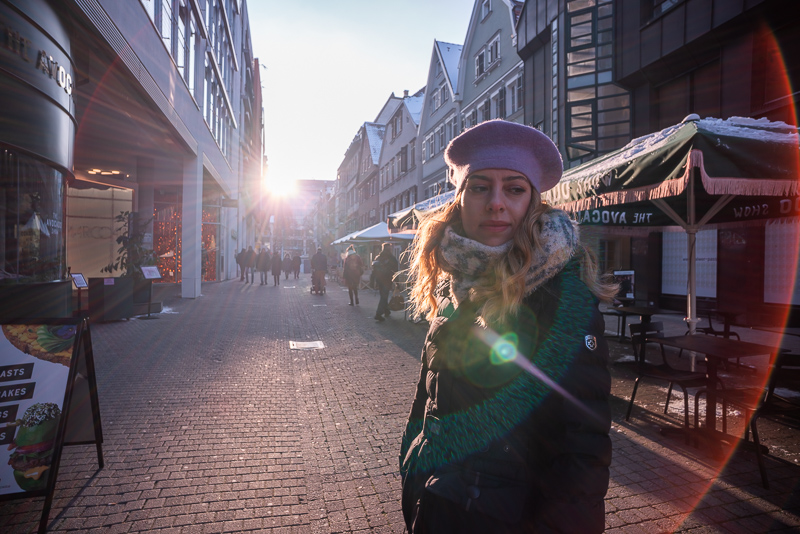
Under the “right” conditions you can create some crazy lens flares like in the picture above, but most of the time things aren’t that bad.
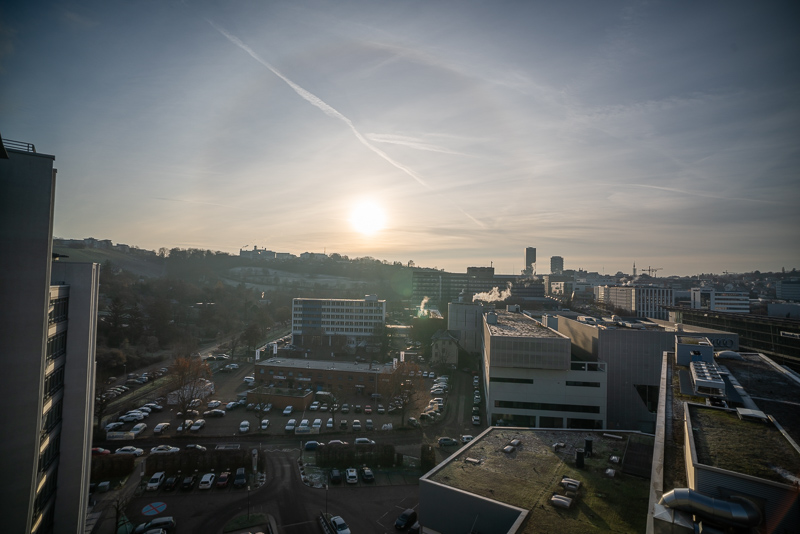
Compared to many other lenses from Chinese manufacturers the AstrHori lenses fared comparably well in this category so far and for a wide angle lens a good flare resistance is definitely important to me.
Ghosting is once more hardly an issue. I do wonder what the AstrHori guys do differently, but some of the other manufacturers could definitely learn from them here.
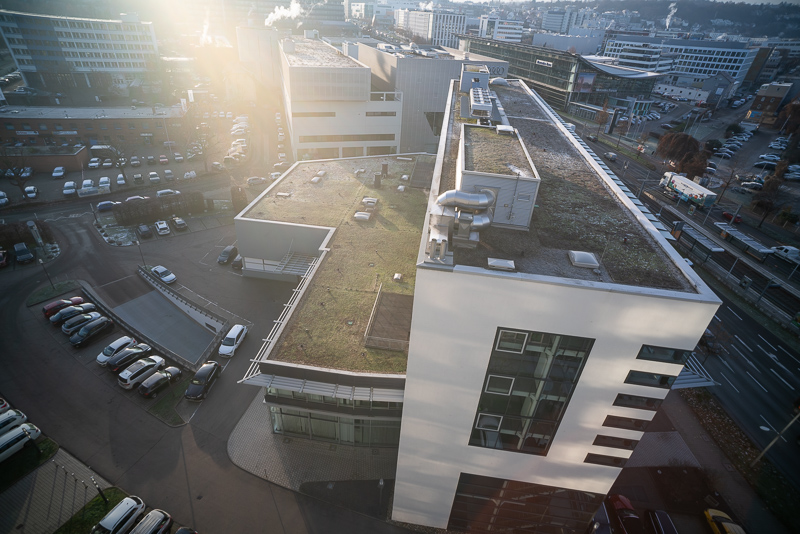
With the sun outside the frame close to the corner there is that one specific position again that leads to a significant flare. As usual this can be avoided by a slight reframing.
With a strong point light source outside the frame on the sides veiling flare can also be an issue. Shading the lens did a good job at solving this and I think including a decent lens hood would have been more useful than the shift function.
Not the best performance I have seen in a wide angle lens (Zeiss Loxia 21mm 2.8, Tamron 17.28mm 2.8 or Zeiss Batis 18mm 2.8 come to mind), but definitely above average and way better than e.g. the Funleader 18mm 8.0 or Brightin Star 23mm 5.6.
Distortion
Talking about negative surprises. The Funleader 18mm 8.0 had such crazy, wavy distortion, I really hoped this AstrHori lens would perform better, but here we are: it is just as bad.
For correcting this a lens specific correction profile is needed, but in my experience with such a complex distortion pattern it will be hard to create a profile that actually works really well.
Again, what would you want to use a slow wide angle shift lens for? First thing that comes to my mind is architecture, but I certainly don’t want to use this lens for that task.
As I already told you in the vignetting section: this is not a full frame shift lens. If the black corners when shifted are not reason enough to come to that conclusion this utterly ridiculous distortion in the shifted area is one more.
Coma
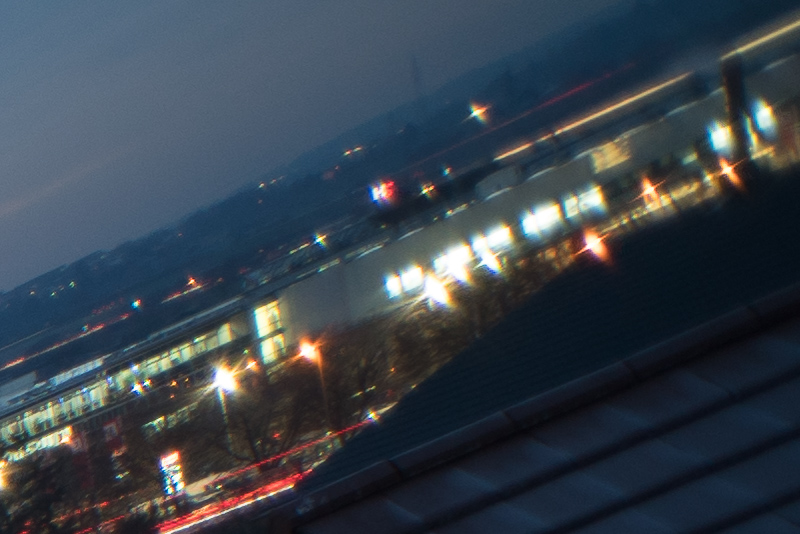
Story here is the same as in the sharpness section. Performance is better on a camera with a thinner filter stack like a Nikon Z.
Sunstars
The AstrHori 18mm 8.0 Shift does not feature an aperture diaphragm and simply has a perfectly round opening instead, so no sunstars here.
Chromatic Aberrations
lateral
Ultra wide lenses often show strong lateral CA and the AstrHori 18mm 8.0 Shift is no exception. Luckily the lateral CA are still easily corrected in a raw developer like Lightroom by one click.
Sony A7rII | AstrHori 18mm 8.0 Shift | 100% crops from border
longitudinal
Due to this being a slow ultra wide angle lens longitudinal CA are nothing to worry about.
Alternatives
Funleader 18mm 8.0:
Comes without unusable shift function and worse flare resistance but is way smaller.
buy from ebay.com (affiliate link) for $140
Samyang 18mm 2.8 AF:
The Samyang 18mm 2.8 AF ist not a great performer at wider apertures, but it is much better stopped down than this AstrHori lens being reviewed here. The Samyang is even 10% lighter than despite offering AF, the price you pay for it is a plastic casing.
buy from amazon.com | amazon.de | B&H | ebay.com (affiliate links) for $299
There are also many zoom lenses covering the 18mm focal length, you can find them in our FE Guide.
Conclusion
good
|
average
|
not good
|
Sometimes when a new lens is being announced people ask me what I think of it (and if I will review it). Especially when that lens sounds too good to be true on paper.
This is one such case. A tiny and cheap 18mm lens with shift function for fullframe? I didn’t have exactly high expectations here. But then the shift movements are limited to ±6mm only and a 9/9 design with aspherical element could potentially allow for a decent correction of most optical aberrations, too.
Fact is, after having used this lens I don’t even know where to start now. So let’s talk about the elephant in the room first: this is not a fullframe shift lens. At the very best you can shift 1-2mm before you start running into black corners. The shift mechanics and controls are also very basic – to say the least.
A small non-shift 18mm fullframe lens for $119 could still be very appealing though, so let us pretend this isn’t a shift lens, where does this leave us?
That horrendous distortion is the next reason to stay away from this lens. But we could still try to create a distortion correction profile for it, so what about sharpness?
This is the second AstrHori wide angle lens I reviewed and also the second one that doesn’t perform well on (unmodified) E-mount cameras. Either the AstrHori designers don’t know that digital cameras feature different filter stacks in front of their sensors or they simply don’t care about that (I already took the time trying to explain it to them). When it was possible to make adjustments to the Funleader 18mm 8.0‘s design to account for that it would have surely been possible here, too.
Now if you are using a camera with a very thin filter stack (a modified Sony or Nikon maybe?) and you really really want a compact, manual focus 18mm lens and don’t mind the distortion – and that this isn’t actually a shift lens – it can be an okayish deal, but to everyone else: stay away from this.
The AstrHori 18mm 8.0 Shift was not a fun lens to use, so please excuse the exceptionally low number of sample images, but I don’t want to spend any more time with this lens.
buy from ebay.com | ebay.de | amazon.de (affiliate links) for $119
Further Sample Images
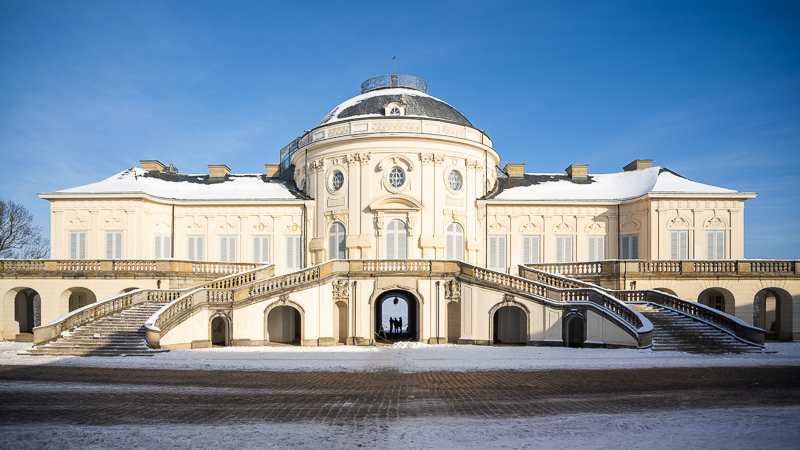
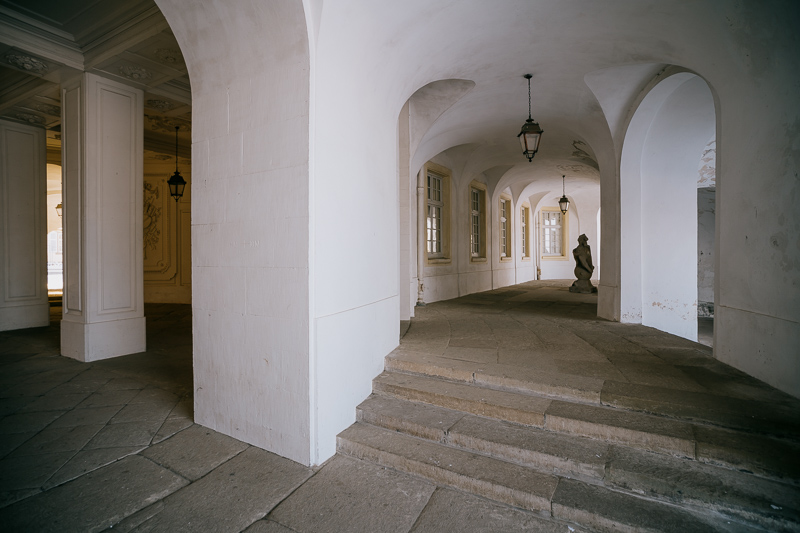
You can find most of the sample images in full resolution here.
Further Reading
- Sony FE lenses: The Honest Guide
- Working with Tilt/Shift lenses
- Review: Laowa 20mm 4.0 Shift
- Lens aberrations explained
Support Us
Did you find this article useful or just liked reading it? Treat us to a coffee!
![]()
![]()
![]() via Paypal
via Paypal
This site contains affiliate links. If you make a purchase using any of the links marked as affiliate links, I may receive a small commission at no additional cost to you. This helps support the creation of future content.
Latest posts by BastianK (see all)
- Review: Sony FE 70-200mm 4.0 G Macro OSS II - December 20, 2025
- Review: Viltrox AF 35mm 1.2 FE LAB - December 17, 2025
- Analogue Adventures – Part 47: Tübingen - December 17, 2025
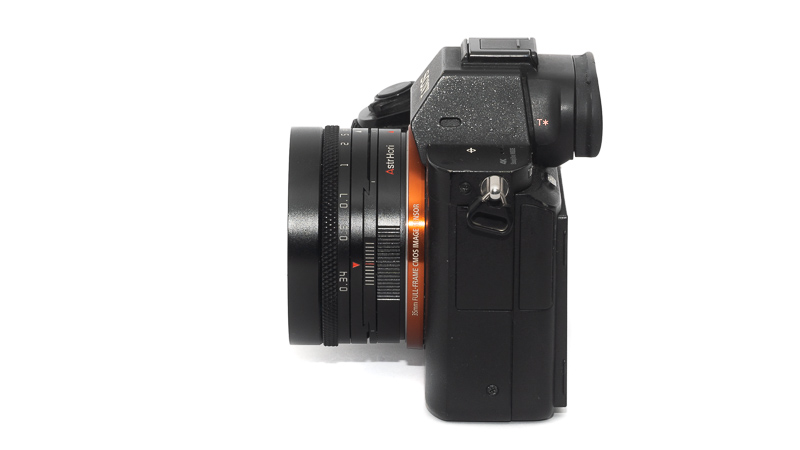
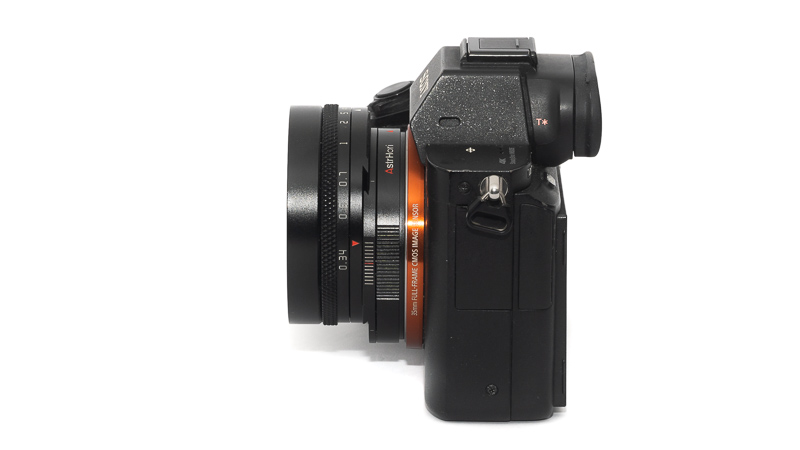

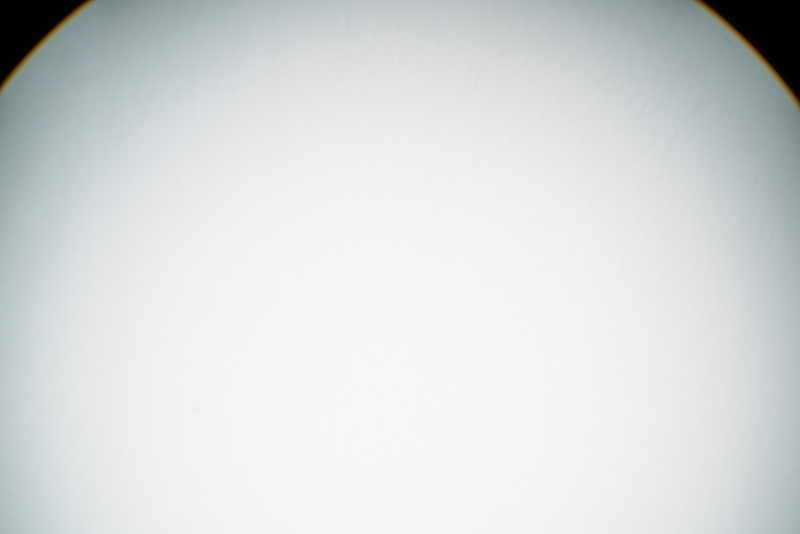

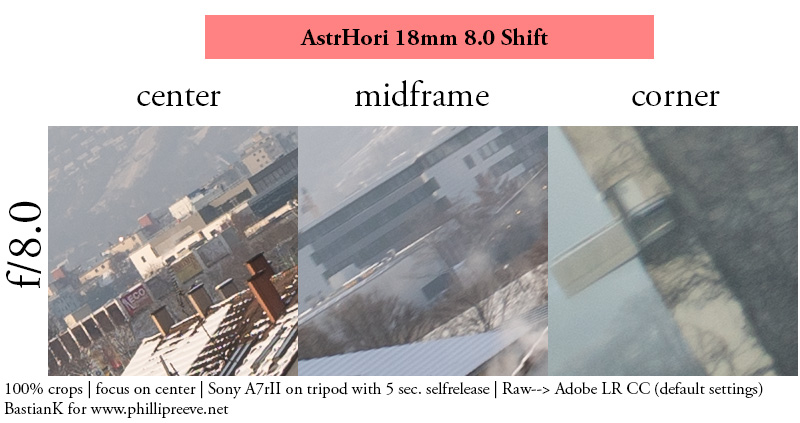
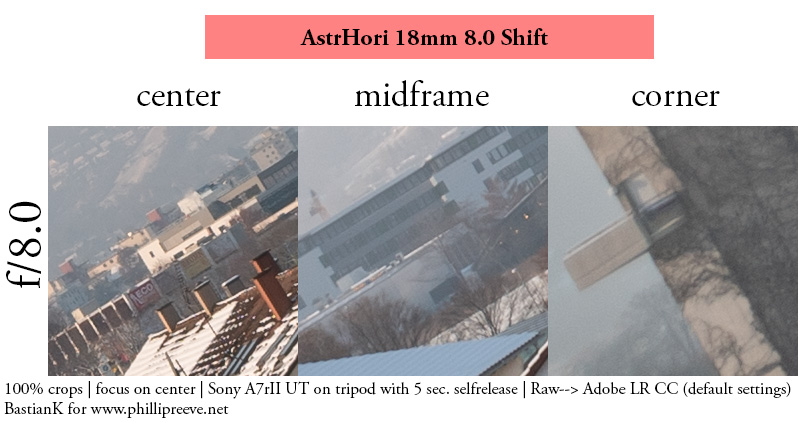

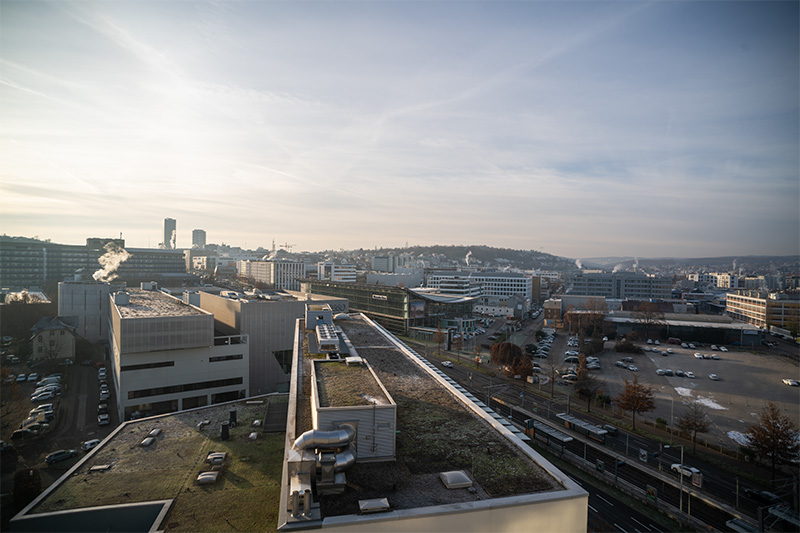


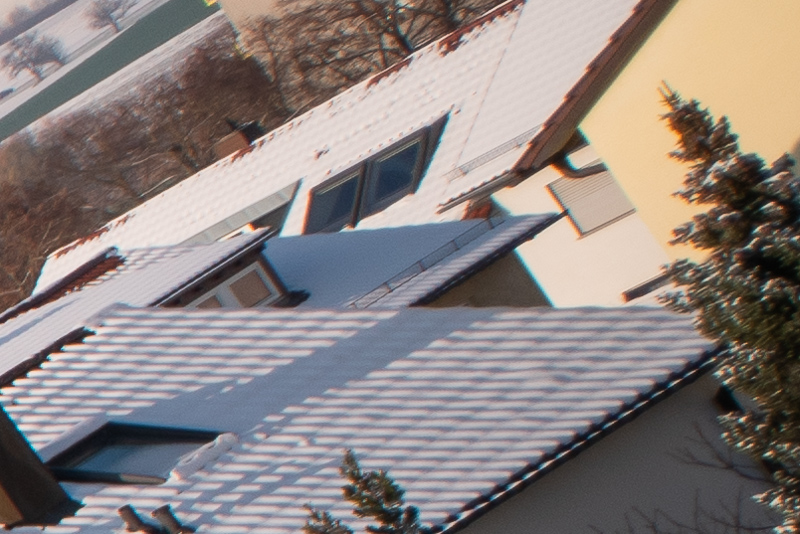
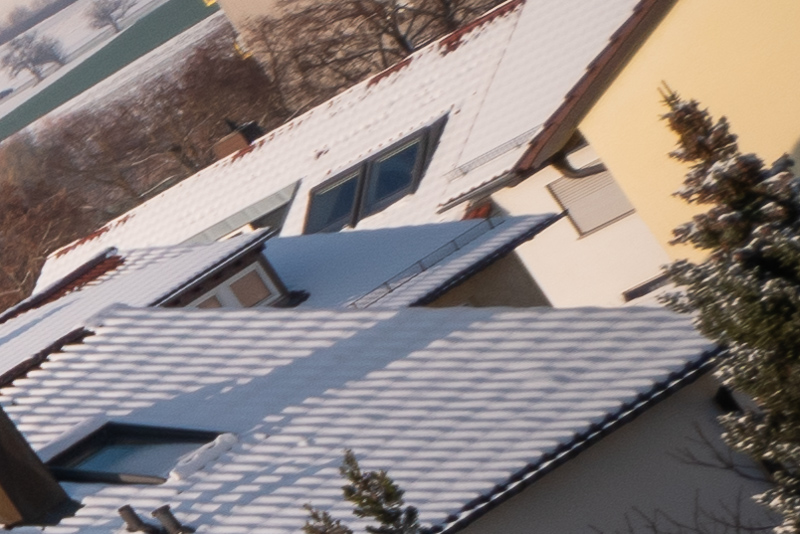
Dear Bastian,
at the end of the year your output is amazing! Thank you so much for keeping up this blog alive (could be renamed in bastiankratzke.net) and thank you so much for your always honest and incorruptible opinion. Wish you a merry christmas and all the best to your family and friends.
I want to try to publish a new article every tuesday, but I increased the frequency a bit for this lens, because I think most of the product descriptions for this one are false advertising.
Bummer that they didn’t design it for larger filter stacks as it looks like it can actually take nice shots. I would love a compact lens but this won’t be it
Thank for a review. I really disappoint to know that shift function really useless on fullframe. I almost buy this lens. Luckily that i wait for your review first. I hope Laowa or some brand make a Shift lens for FF that design specific for mirrorless. Laowa 15mm f/4.5 is a bit too Large for Sony FE mount.
.
Wish you a merry Christmas and all the best to your family and friends.
If they advertise this as a FF shift lens than that is definitely a case of false advertising, to put it nicely. Unlike some other Chinese brands, these guys seem to only design gimmicky lenses. Perhaps it would be decent on some Z mount apsc camera, for those who use a shift lens and care not about distortion (must be a huge market). I do applaud them for one thing though, they are brave enough to send their lenses to serious reviewers, hopefully they learn from the feedback.
Happy holidays Bastian, this was a great year for the blog, long may it continue.
Maybe it was the last lens they sent me, we will see
Thanks for yet another honest and well done review.
Since I mostly use Nikon Z cameras and previously had the Sony a7II simultaneously with Nikon Z6, I’d like to comment on the idea that the Sony sensor glass thickness is markedly thicker than the ones in Nikon Z cameras*.
This was the main reason why I bought the Z6 as a replacement for the a7II, but my side-by-side tests with wide angle (and fast 50mm) M mount lenses clearly demonstrated that the difference is minor. Let’s say the Sony stack is about 2,5mm and I estimate the Nikon sensor glass thickness to be around 2mm, or most likely more like 2,2mm. The Z camera sensor glass is thick enough to fully warrant getting my Z6 Ultra Thin converted by Kolari Vision.
* It was in the description of the teardown that Kolari Vision did of the Nikon Z6 and Z7 that the idea that the Nikon Z sensor glass thickness apparently is only 1,1mm. However, that thickness is only the _removable_ part of the sensor stack. There is allegedly a glass layer epoxy glued to the sensor which is about 1mm thick, so the total thickness amounts to about 2mm or slightly more. The minor difference between Sony and Nikon sensor stack thickness matches my practical tests as well as what diglloyd.com has concluded.
I read several reports that M-Mount lenses do noticeably better on Z cameras, you think this isn’t the case?
Definitely not. I extensively compared old Nikon rangefinder wide-angle lenses on Sony A7R2 vs. Z7. Almost no difference – sometimes the Nikon was a bit better in the corners, but the Sony was better a few millimeters closer to the center. Or the other way round with a just slight change in focus. And those were almost unnoticeable differences, not the drastic, obvious ones visible in your Sony vs. M10 or Kolari UT mod comparisons. And I really _wanted_ the Nikon to be better. No such luck.
I think this belief is founded on the first and erroneous 1.1mm measurement from the Kolari teardowns already mentioned by LarsHP above. This was later corrected to “really almost the same thickness as Sony”. I don’t have the source for the correction, just the update in Lloyd’s report: https://diglloyd.com/blog/2018/20181009_1248-NikonZ7-cover-glass-thickness.html
– Chris
Very interesting information, but makes this lens even more useless!
Well, I do think the Z6 performed slightly better than the a7II, but I’d like to emphasize “slightly”, particularly considering the Z6 has a BSI sensor while the a7II hasn’t. The difference was mostly visible near the corners while viewing at 1:1 magnification on my 27″ desktop screen. On the Z6 there was slightly less smear / astigmatism-like blur, and because it has a BSI sensor design, there was no or almost no LaCA like issues (still talking about near the corner). Field curvature seems to be quite similar, perhaps with a minor advantage to the Z6.
I got some full res jpg files from a Nikon Z7 user shot with Leica 28mm Elmarit-M Asph II, and away from the center it looked plainly awful because there was huge reverse (or outward) field curvature. I later bought the 28mm Summicron-M Asph II because I read it was optimized for full frame digital sensors. It too looked awful outside the center, at least considering how well it ought to perform when looking at the MTF, images taken with digital Leica M cameras as well as on my full spectrum converted Sony a7 (using a hot mirror filter on the lens).
I have since sold the ‘cron in favor of the relatively new Voigtländer Ultron 28mm Asph II, and that lens performs _brilliantly_ on my Z6UT while on my stock Z7, there is a sudden, strong outward going field curvature at the far edges and near the corners. This alone suggests that there is a considerable difference in sensor glass thickness causing this behavior, and in fact, there is. The Z6UT has a 0,9mm thinner sensor stack which is all the difference (since resolution doesn’t play a role regarding field curvature).
Also note that Voigtländer says that their Apo-Lanthar lenses in Z mount are optimized for these cameras. If they thought the M mount versions were doing just as well on the Z camera sensors, they wouldn’t have bothered making these lenses in Z mount, I think.
I’d like to add that, although I don’t consider the Nikon Z cameras optimal for “difficult” M mount lenses, I have seen a user at Fred Mirandas site saying his Nikon Z7 is superior to his (now sold) Leica SL (type 601) even though he used Leicas own M to L adapter with 6bit coding enabled. With the SL2 and SL2-S cameras, that may very well have changed things, as he says.
So, in relative terms, the Nikon Z cameras may perform a little better than Sony and even the first generation Leica SL camera. That said, the Z cameras are far from ideal for M mount lenses.
Hi Bastian, thank you for the review. This lens is now advertised on the AstrHori site as an APS-C lens and is not recommended for full frame. I wonder if this lens would have exceeded your expectations had you done it on an APS-C body instead. As an architectural photographer I am considering it for my Leica CL or XE-4 and unfortunately all online and YouTube reviews of this lens have been negative due to the false full frame impression which must have initially been provided by AstrHori. A revisit based on APS-C would be much appreciated. Kind regards. Matt.
It still won’t be a great lens on APS-C, but it does make a little more sense to market it as one.
Thanks for circling back… I wish there’s another shift option lens out there similar to my vintage 28 PC Nikkor but for an APS-C format. Most are tilt/shift which doesn’t work for architectural photography.
In 2024 a shift lens that is neither UWA nor a macro tele doesn’t make a lot of sense.
Instead of an 18mm Shift lens you can just use e.g. a 12mm prime or one of the ultra wide angle zooms and tilt the picture a bit in post.
In pretty much every case you will end up with better quality compared to this AstrHori lens.
“Especially when that lens sounds too good to be true on paper”
Yes, so was I expecting a review and, Merry Christmas, I had one of the best !
How disappointing…
Many thanks for your time & effort
Thank you for saving my $119 and potentially other souls hoped this lens is useful. I just realized that I’ve never seen medium format pancake lenses with such short focal length.
Hope Astrhori’s next 105mm F2.8 Medium format TS lens with 2x macro capability at least meet its catalog spec.
I’m now using Mamiya 645-E adpater with TS function for 120mm F4 macro. The lens is a bit worse in resoultion compared to Sony 90mm, but the tilt capability is quite useful for me. I hope the AstrHori 105mm has some potential.
This is the resoultion comparison between Mamiya 120mm and Sony 90mm
https://1drv.ms/u/s!ApChBCAABuR-jbpoptBQlhrOnqF0aQ?e=YDKHgM
Happy new year.
https://1drv.ms/f/s!ApChBCAABuR-jbptiKlRIj-fj1bPgg
I’ve found official MTF chart of Astrhori 18mm F8 shift and 105mm F2.8 medium format TS lenses.
Compared to the 105mm, the 18mm chart doesn’t make any sense because even the image circle of 6×7 lenses is smaller(~89mm) than this lens if the described 49mm in x axis is telling half of its image circle as usual, or the shape of the graph should be something like “bell distribution”, if it is covering whole image circle. The point is you can’t tell its size of image circle by the official MTF, so it is misleading as well.
Yes, the description of the graph is wrong. I think they noted the actual image circle but are showing the mtf from center to corner. The 49 would have to be 24.5, which would mean you can shift 1.5 mm before encountering black corners.
Shifting ±1.5mm means adding 3mm in horizontal edge of the image rectangle (you know shifting vertically requires smaller image circle than shifting horizontally), so diagonal line of 39×24 rectangle is the diameter of the required minimum image circle, which is ~46mm. The graph shows stiff drop of the contrast at that point, but still not 0. With 49mm image circle, you can get ~±3.3mm shift.
And I was confused about the tilt: tilt function is nothing to do with the image circle, so the macro lens would do the scheimpflug thingy even if it doesn’t have bigger image circle.
You forgot a divided by 2 there. 3.3/2 = 1.65
Actually 5mm image circle difference give more room for shift, because we don’t shift the lens radially. I have shameful hand writing and drawing skill, but this picture should get you what I mean.
https://1drv.ms/u/s!ApChBCAABuR-jbp3c3_8okudOEIsMQ?e=laxqDM
the shift function I won’t say it is useless.
I still able to crop into 4/3 and get decent result with a 18.5 megapixel file(from 24.5mp Z6), roughly equivalent 23-24mm lens.
On Nikon Z6 its work quite a lot better than Sony A7, but still slightly worst that UT converted A7.
and really is not as bad I thought it will be after reading your review.
at this price range it actually pretty decent for nikon camera!
overall I think is pretty fun lens, just don’t expect it to be a real shift lens. at this price point and size is already quite a wonderful lens.
Maybe they should add a note to the product description that it shouldn’t be used on a Sony camera and only in 4:3 aspect ratio then…
true! the description wasn’t truthful.
IMHO, the asinine decision AstrHori made with this lens is marketing it as a ~full-frame~ only lens. I guess an 18mm pancake isn’t useless on FF, but at very least this should also have been released for APS-C and M43 mounts.
On Fuji, this would be fairly tempting. Roughly the equivalent of a 28mm, but tiny and shiftable (and actually shiftable given the image circle). I could see using that. Even on m43, a shifting 35mm equivalent could be handy.
While tilt-shift adapters are possible on crop sensors, there aren’t affordable vintage lenses this wide angle. Tilting a 50mm lens can do some neat things, but not really what this theoretically could do.
This should make an excellent APS-C shift lens. I could see it doing very well on a Nikon Z50 II. It would be an equivalent 27mm with shift. All the mentioned issues would be resolved by only using the center. I’m a full frame & medium format shooter who has recently started toying around with APS-C and MFT. The small sensors do have a place for travel photography, much the same way that 35mm became the norm for press photography in the 60s.